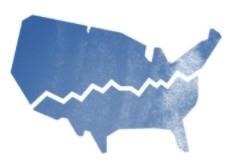Field to Market: The Alliance for Sustainable Agriculture, released their “Environmental Indicators for Measuring Outcomes of On Farm Agricultural Production in the United States” also known as the National Indicators Report, which analyzes trends over time in sustainability performance for U.S. commodity crop systems, providing a critical assessment of where U.S. agriculture has made progress in driving improved environmental outcomes.

The main areas of observation are land use, soil erosion, irrigation water use, energy use, and greenhouse gas emissions. Key findings for wheat were indicative of improved sustainability practices. In almost every category wheat saw an improvement in its sustainability efforts. Over the last decade we have seen strong advances in the environmental indicators for land use, energy use, and irrigation water use. View the full report here.
“The increasing sustainability efforts of wheat is great news and highlighted the environmentally friendly practices wheat growers are implementing,” said NAWG CEO, Chandler Goule. “However, if we want to keep seeing these improvements, new technology and advancement is necessary. To further these improved environmental outcomes, there needs to be ongoing investments in research and development in technology, crop protection tools, and wheat seed varieties.
Click here to see more...